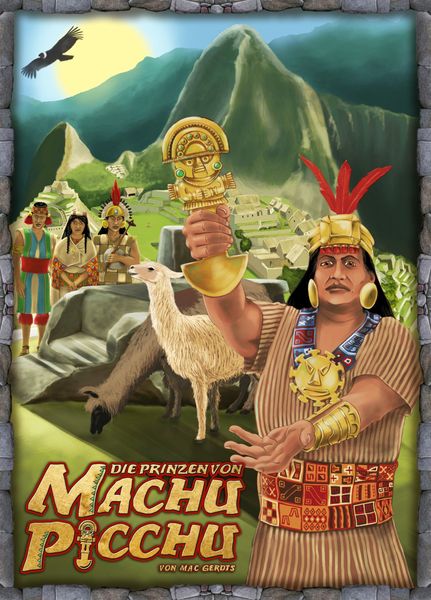The Princes of Machu Picchu (2008) Board Game
The Princes of Machu Picchu is a board game designed by Mac Gerdts and released in in 2008. It is set in the ancient Incan civilization and players take on the roles of princes competing for power and influence in the city of Machu Picchu.
Game Components of The Princes of Machu Picchu
How To Setup The Princes of Machu Picchu
To set up the game, each player chooses a prince pawn and places it on the starting district on the board. Each player starts with a scoring card and a set of worker discs. The goods, llama tokens, and other components are placed within reach of all players. The mountain track is set up separately, with each player’s runner token at the foot of the mountain.
Gameplay Mechanics and Game Objective
Gameplay Mechanics
Game Objective
Player Experience
Playing The Princes of Machu Picchu involves a delicate balance between preserving the Incan empire and the temptation of betraying it for personal gain. Players must strategically move their princes, manage resources, and recruit priests and virgins to either save Machu Picchu or accumulate gold. The game’s unique endgame conditions introduce a layer of uncertainty, as players must guess their opponents’ intentions and adjust their strategy accordingly. This constant maneuvering makes the game engaging and challenging.
Pros
Cons
Personal Thoughts on The Princes of Machu Picchu
The Princes of Machu Picchu is ideal for fans of strategy and economic games who enjoy a mix of resource management, worker placement, and variable player powers. The game’s thematic depth and the intricate balance between preserving the empire and betraying it make it appealing to those who enjoy complex, yet not overwhelmingly so, gameplay. It is suitable for players aged 12 and above and is best enjoyed with 2-5 players. If you’re looking for a game that challenges you to think several steps ahead while maintaining a engaging and unpredictable experience, The Princes of Machu Picchu is a great choice.
We are supported by our audience. When you purchase through links on our site, we may earn an affiliate commission, at no extra cost for you. Learn more.

